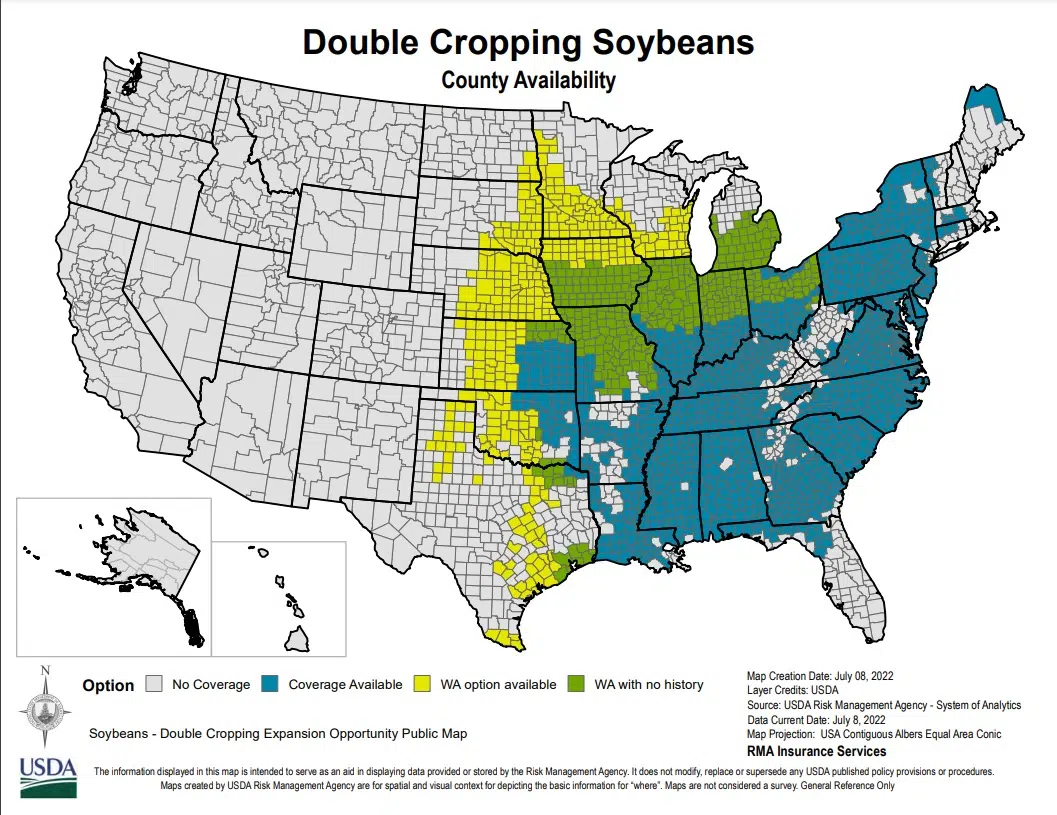The Department of Agriculture Tuesday announced an expansion of crop insurance availability for double-crop practices.
To reduce the risk of raising two crops on the same land in one year – a practice known as double cropping – USDA’s Risk Management Agency is expanding double-crop insurance opportunities in over 1,500 counties where double cropping is viable.
Agriculture Secretary Tom Vilsack joined President Joe Biden at an Illinois farm in May to announce a series of actions to help farmers.
Vilsack says, “Today, USDA is making good on one of those commitments and making it easier to plant double crops and sharing some of the financial risk.”
For soybeans, double-crop coverage will be expanded to or streamlined in at least 681 counties. For grain sorghum, double-crop coverage will be expanded to or streamlined in at least 870 counties. The coverage expansion was guided by extensive outreach to nearly 70 grower groups covering 28 states.
See maps for where expanded opportunities for soybeans and sorghum are located.
Improvements include:
- For soybeans, double crop coverage will be expanded to or streamlined in at least 681 counties, including all of those that were initially targeted for review. While some additional counties were permanently added to be double crop counties, the majority of expansion removed barriers such as requiring production records and streamlined the process to get personalized coverage through a written agreement.
- For grain sorghum, double crop coverage will be expanded to or streamlined in at least 870 counties that were initially targeted for review. Similar to soybeans, most of these changes included streamlining the administrative burden and requirements to obtain written agreements. Written agreements provide the producer with the maximum flexibility by allowing them to obtain crop insurance coverage, but not requiring the coverage of both the spring and winter crops as in permanent double crop counties.
- RMA will also work with the crop insurance industry and farm organizations to highlight the availability and improvements in written agreements as an option for any farmer that grows a crop outside the area where a policy is automatically offered.
USDA/NAFB News Service





Comments